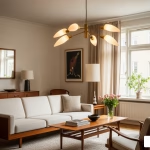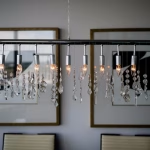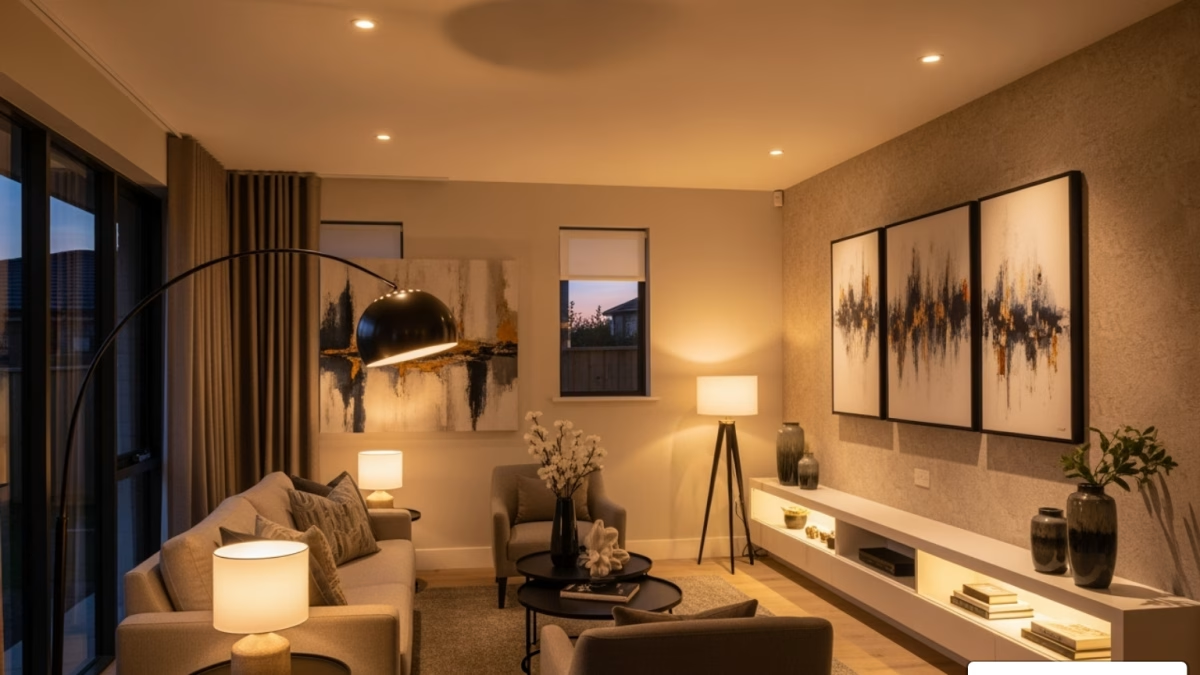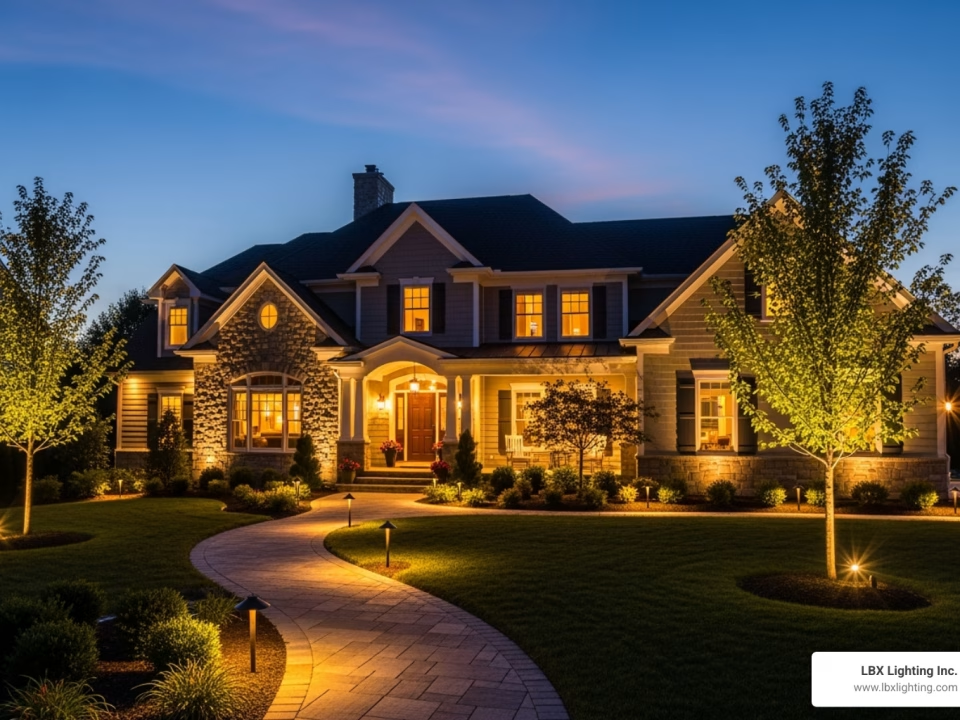
Illuminate Your Style with Mid Century Modern Living Room Lights
September 3, 2025
Dining Delight: Antique Chandeliers to Illuminate Your Meals
September 10, 2025
Why Residential Lighting Plans Transform Your Home
Residential lighting plans are detailed blueprints that map out every light fixture, switch, and control in your home. A well-designed plan does more than just brighten a space; it creates the foundation for how your home feels and functions.
The impact goes beyond aesthetics. With lighting accounting for over 25% of a home’s energy use, efficient planning is crucial for your utility bills. A plan that incorporates modern LED technology can reduce electricity consumption by up to 90%. Without one, you risk common pitfalls like harsh shadows, inadequate task lighting, and poorly placed switches.
As interior designer Patricia Rizzo notes, “Lighting is a powerful tool in a person’s health, and in their daily rhythms.” The right lighting plan improves mood, improves functionality, and can even increase your property value.
I’m Michael Eftekhar, and for over 30 years, I’ve helped Houston homeowners create stunning residential lighting plans. My experience has shown that a thoughtful plan is the difference between a house that merely functions and a home that truly shines.
Residential lighting plans terms to learn:
What Are Residential Lighting Plans and Why Are They Essential?
A residential lighting plan is a blueprint for your home’s illumination. It’s a technical drawing that maps out the placement of fixtures and switches to ensure every corner is thoughtfully lit, optimizing both ambiance and functionality.
Lighting is not just about seeing; it’s about feeling. A good plan transforms a house into a warm, inviting home. Without one, you risk a disjointed and inefficient lighting environment with harsh glares or dark corners. A well-executed plan also contributes to your property’s value and plays a pivotal role in energy efficiency. By strategically placing energy-efficient fixtures and controls like dimmers, you can significantly reduce your home’s energy consumption. A detailed plan helps prevent common mistakes, ensuring every light serves a purpose to improve mood, safety, and productivity.
The Three Pillars of Light: Layering for Ambiance and Function
The warm, inviting atmosphere in a well-designed space is the magic of layered lighting. It’s not one bright overhead light, but multiple types of lighting working together. When we create residential lighting plans, we use layering to make rooms feel comfortable and luxurious.
The concept is simple: combine three different types of lighting to create visual depth, improve functionality, and add a “wow” factor. The three pillars are ambient lighting (your foundation), task lighting (your focused work light), and accent lighting (your decorative flair). Master these, and you’ll understand how good lighting can transform your home. For deeper insights, see our guides on How Good Lighting Affects Ambience and Know the Three Types of Home Lighting.
Ambient Lighting: The General Glow
Ambient lighting is your room’s foundation layer, providing gentle, overall illumination that lets you move around safely. It creates uniform light, eliminating harsh shadows and making a room feel welcoming.
- Recessed lighting is a popular choice, offering clean, unobtrusive light that disappears into the ceiling. Proper spacing is key to avoid dark spots.
- Chandeliers bring both ambient light and personality, making a statement in dining rooms, living rooms, and entryways. Our guide on Choosing a Chandelier can help you find the perfect fit.
- Flush-mount and semi-flush mount fixtures are ideal for rooms with lower ceilings, like hallways and bedrooms, where a hanging fixture might feel overwhelming.
The goal is to create a comfortable foundation that makes your space feel lived-in.
Task Lighting: Focused Illumination
Task lighting puts light exactly where you need it for specific activities like reading, cooking, or applying makeup. It prevents you from working in your own shadow, making tasks safer and more enjoyable.
- Under-cabinet lights are game-changers in the kitchen, illuminating countertops directly.
- Desk lamps in home offices provide concentrated light for reading and working.
- Vanity lights placed on either side of a bathroom mirror provide even, shadow-free light essential for grooming.
- Pendant lights over kitchen islands or dining tables serve as both task lighting and decorative elements. Explore our collection of Pendant Light Fixtures for a variety of styles.
Great task lighting comes from thinking about how you use each space and placing light exactly where activities happen.
Accent Lighting: Creating Drama and Focus
Accent lighting is your room’s jewelry, highlighting beautiful artwork, architectural details, or other features you want to showcase. This layer creates focal points and visual interest, making rooms feel more dynamic and sophisticated.
- Track lighting is incredibly versatile, allowing you to adjust and redirect fixtures as your decor changes. Our Track Lighting Options suit both modern and traditional settings.
- Wall sconces create beautiful pools of light that add warmth and subtle highlighting.
- Picture lights are specialized fixtures that mount above artwork to ensure it’s seen in its best light.
Accent lighting is typically the brightest layer, drawing the eye and shaping how you feel in a space. When you combine all three layers in your residential lighting plans, you create spaces that are both beautiful and functional.
How to Create Comprehensive Residential Lighting Plans: A Step-by-Step Guide
Creating your own residential lighting plans doesn’t have to be overwhelming. With a solid plan, you can avoid common pitfalls like harsh shadows, poorly placed fixtures, and inconvenient switches. Because you know how you live in your space, you’re in the best position to create a plan that works for you. Let’s walk through the process. For additional guidance, check out our guide on How to Develop a Lighting Plan.
Step 1: Draft Your Floor Plan and Assess Your Space
Start with the foundation of all great residential lighting plans: a floor plan. Grab some graph paper or use a digital tool.
- Measure your room dimensions, including ceiling height.
- Mark all fixed elements: windows, doors (and their swing direction), fireplaces, and built-ins.
- Sketch in your furniture layout. This is crucial for determining where to place task and accent lighting.
- Note natural light sources to help balance artificial light with daylight.
- Identify unique architectural elements like vaulted ceilings or exposed beams that could become focal points.
Need a head start? Download this helpful graph paper and checklist PDF to guide you.
Step 2: Define Room Functions and Lighting Zones
Think about how you actually live in each space. Is your kitchen island a homework station and a cocktail bar? Does your living room need to work for both movie nights and reading? Understanding these multi-functional spaces is key. Also, consider who uses the room, as lighting needs change with age—a 60-year-old needs significantly more light for reading than a 10-year-old.
Now, map out your lighting zones for each of the three layers:
- Ambient: Where do you need general illumination for safe movement?
- Task: Pinpoint every spot where specific activities happen (chopping vegetables, applying makeup, reading).
- Accent: What features, artwork, or architectural details deserve the spotlight?
For more strategies, explore our guide on How to Light a Room Advantageously.
Step 3: Mark Fixture Locations and Controls
Now it’s time to mark exactly where every fixture and switch belongs, creating a clear roadmap for your electrician. Use standard lighting symbols on your plan.
- Fixture Placement: For ambient recessed lights, a good rule of thumb is placing them about 24 inches from walls, with spacing between them equal to about half the ceiling height. Hang pendants 30-36 inches above counters or tables. Ensure chandeliers have at least 7 feet of clearance underneath.
- Switch Locations: Place switches at every entry and exit point of a room. Use three-way switches for long hallways or rooms with multiple entrances.
- Dimmers and Circuits: Mark dimmers wherever you want lighting flexibility—which should be almost everywhere. Plan your circuits logically, grouping related lights together to give you maximum control and prevent overloading.
Step 4: Select Fixtures to Finalize Your Residential Lighting Plans
This is where your residential lighting plans become personal. Selecting fixtures is where function meets style.
- Style and Scale: Choose fixtures that harmonize with your home’s personality and are scaled appropriately for the room and furniture. An oversized chandelier can overwhelm a small room, while a tiny pendant looks lost over a large island.
- Finishes: Don’t be afraid to mix metal finishes to create visual depth. Brushed nickel with brass accents or matte black with warmer metallics are popular combinations.
- Technology: Choose LEDs, which consume up to 90% less electricity and last far longer than older bulbs. Focus on lumens (brightness), not watts (energy use).
- Color Temperature: Use warm light (2700K-3000K) for cozy areas like living rooms and bedrooms. Use cooler, neutral light (4000K-5000K) for task-oriented spaces like kitchens and home offices. Consistency within a room is key.
Your detailed plan ensures every choice serves both beauty and function, whether you choose from our Residential Lighting Fixtures or explore Custom Light Fixtures.
Technical and Design Considerations for a Flawless Plan
Getting the technical details right is what separates a good residential lighting plan from an exceptional one. Mastering the science behind placement, color quality, and controls ensures your lighting doesn’t just look stunning—it performs flawlessly. These principles provide the foundation for a plan that is both beautiful and brilliantly functional.
For those diving deep, the Strategy Guideline: High Performance Residential Lighting offers comprehensive technical insights.
Mastering Measurements and Placement
Following placement guidelines helps avoid common lighting disasters. Poor placement is often what makes a room feel “off.”
- Recessed Light Spacing: A simple rule is to divide your ceiling height by two to find the ideal distance between lights. For an 8-foot ceiling, space lights about 4 feet apart. Keep them at least 3 feet from walls to create a soft wash of light.
- Chandelier Height: Over a dining table, hang the fixture so its bottom is 30 to 36 inches above the tabletop. For any ceiling fixture, maintain at least 7 feet of clearance for safe passage. Our Chandelier Hanging Height Guide has more details.
- Sconce Height: Place sconces around 70 to 75 inches from the floor. In bathrooms, placing them on either side of the mirror is far more flattering than overhead lighting.
Choosing the Right Color Temperature and CRI
The “color” of your light transforms how your home feels. This is where color temperature and Color Rendering Index (CRI) are your secret weapons.
- Color Temperature (Kelvin): This describes if light feels warm or cool. Use warm light (2700K-3000K) for a cozy glow in living rooms and bedrooms. Use neutral white (3500K-4100K) for clarity in kitchens and bathrooms.
- Color Rendering Index (CRI): This measures how accurately colors appear under the light. Aim for a CRI of 90 or higher to ensure paint colors, artwork, and skin tones look natural and vibrant.
The Power of Controls: Dimmers and Smart Lighting
Controls bring your residential lighting plan to life. Dimmer switches are essential, acting like a volume control for your lighting. They allow you to adjust from bright task lighting to a soft, romantic glow.
Smart lighting systems offer even more possibilities, like programming “scenes” for activities (“movie night,” “dinner party”), using voice control, or scheduling lights to turn on and off. These systems can improve your daily routines and energy levels. Explore options with our Smart Home Lighting and Lighting Control Systems solutions.
Energy Efficiency: The Smart and Sustainable Choice
An energy-efficient plan is good for the planet and your wallet.
- LED Technology: LEDs consume up to 90% less electricity and can last 25 years or more, dramatically reducing waste and replacement costs.
- Sensors: Occupancy sensors turn lights off in empty rooms, while daylight sensors adjust artificial light based on available natural light, further cutting energy use.
These technologies work invisibly to optimize your energy use while keeping your home perfectly lit. For more tips, see our guides on Eco-Friendly Lighting Solutions and Simple Money-Saving Lighting Tips for Homeowners.
6 Common Mistakes to Avoid in Your Lighting Design
Even with the best intentions, it’s easy to make lighting mistakes. After three decades in the industry, I’ve seen them all—and the good news is they’re avoidable with proper residential lighting plans. Here are the most common errors to sidestep. For more tips, see our Residential Indoor Lighting Tips.
Using Only One Central Overhead Light
This is the classic “ceiling teat” problem: a single fixture trying to light an entire room. The result is a harsh hot spot directly underneath and dark, shadowy corners. This makes a room feel flat and uninviting. The fix is layered lighting, using multiple sources at different levels for even illumination.
Forgetting or Skimping on Dimmers
Dimmers aren’t a luxury—they’re essential. Skipping them locks you into one-size-fits-all lighting. Without dimmers, you lose control over the ambiance, unable to adjust from bright and energizing to warm and intimate. Once you experience the flexibility of dimmers, you’ll wonder how you lived without them.
Poor Task Light Placement
The most common error is placing task lighting where your body casts a shadow on your work area. In the kitchen, this means your recessed lights are blocked when you stand at the counter. The solution is under-cabinet lighting. In the bathroom, an overhead vanity light casts unflattering shadows. The fix is sconces on either side of the mirror.
Ignoring the Scale of Fixtures
Size matters. Oversized fixtures can make a space feel cramped, while undersized fixtures look lost and insignificant. A fixture’s proportion should relate to the room’s size, ceiling height, and surrounding furniture. When the scale is right, your lighting feels like a natural part of the room.
Treating Switch Placement as an Afterthought
Nothing is more frustrating than fumbling in the dark for a poorly placed switch. Switches should be located at every entry and exit point. For rooms with multiple entrances, use three-way switches. Group controls logically so you’re not playing “lighting roulette” to adjust the ambiance.
Mismatched Color Temperatures in the Same Room
Mixing different color temperatures—like a warm 2700K lamp with a cool 4000K ceiling fixture—creates a jarring, inconsistent feel. This visual discomfort makes a space feel “off.” The solution is to maintain a consistent color temperature within each room so all your light sources work together as a team.
Frequently Asked Questions about Residential Lighting Plans
Creating residential lighting plans brings up many questions. After helping Houston families for over 30 years, I’ve noticed the same concerns come up again and again. Here are answers to the most common ones.
How many recessed lights do I need in a room?
There’s no single magic number. The answer depends on your room’s size, ceiling height, and purpose.
A good starting point for spacing is to divide your ceiling height by two (e.g., for an 8-foot ceiling, space lights 4 feet apart). However, the most important factor is the required light level. A kitchen where you’re chopping vegetables needs more intense light (50-70 lumens per square foot) than a cozy bedroom (20-30 lumens per square foot).
The best approach is to start with the basic formula and then adjust based on how your family uses the space. For more detailed guidelines, check out our Recessed Canned Lighting guide.
Can I mix different metal finishes on my light fixtures?
Absolutely! Mixing metals is a great way to add sophistication and visual interest. The days of perfect matching are over. The key is to choose one dominant metal to create a cohesive foundation, then add accent metals thoughtfully. For example, polished nickel pairs beautifully with brass, while matte black acts as a neutral that complements almost any other finish. Look at your existing hardware (cabinet pulls, door handles) to ensure your lighting metals feel like they belong.
What is the difference between lumens and watts?
We grew up thinking in watts, but with modern lighting, it’s time to focus on lumens.
- Lumens measure brightness. This is the actual amount of light a bulb produces. The higher the lumens, the brighter the light.
- Watts measure energy consumption. This is how much electricity the bulb uses.
With old incandescent bulbs, more watts meant more lumens. But LED technology changed everything. An LED can produce the same brightness (lumens) as an old 60-watt bulb while using only 15 watts of energy. When shopping, focus on lumens to get the brightness you want, and check the watts to see how efficient the bulb is.
Illuminate Your Vision
You’ve done the hard work—mapping your space, understanding light layering, and learning how to avoid common pitfalls. Now you can bring your residential lighting plans to life.
Your lighting plan is the foundation of how your home feels every day. The layered approach—combining ambient, task, and accent lighting—transforms ordinary spaces into extraordinary ones. Details like color temperature, CRI, and smart controls give you the flexibility to adapt your lighting to any mood or activity.
Energy-efficient LED technology not only saves money but also creates a sustainable home that works smarter.
We know this process can feel overwhelming, but the best lighting plans are personal. They reflect how you actually live, making your daily routines easier and your home more beautiful. With your solid plan in hand, you’re ready to select the perfect fixtures. The team at LBX Lighting Inc. is here to help you find solutions that work for your unique lifestyle. Explore our extensive collection of Residential Lighting Fixtures to get started on illuminating your vision.










